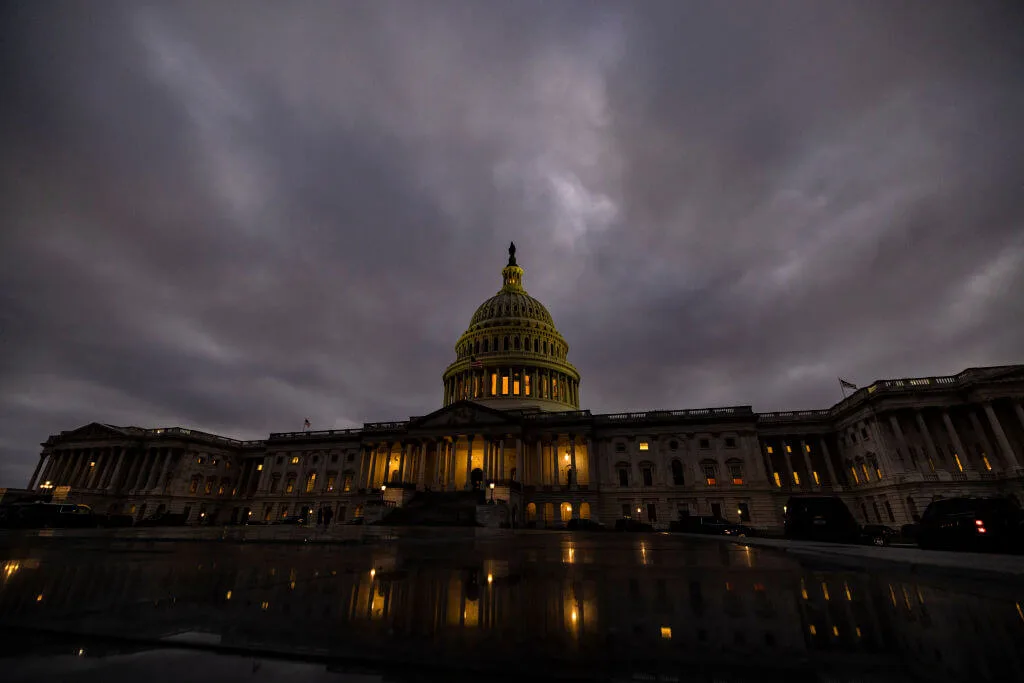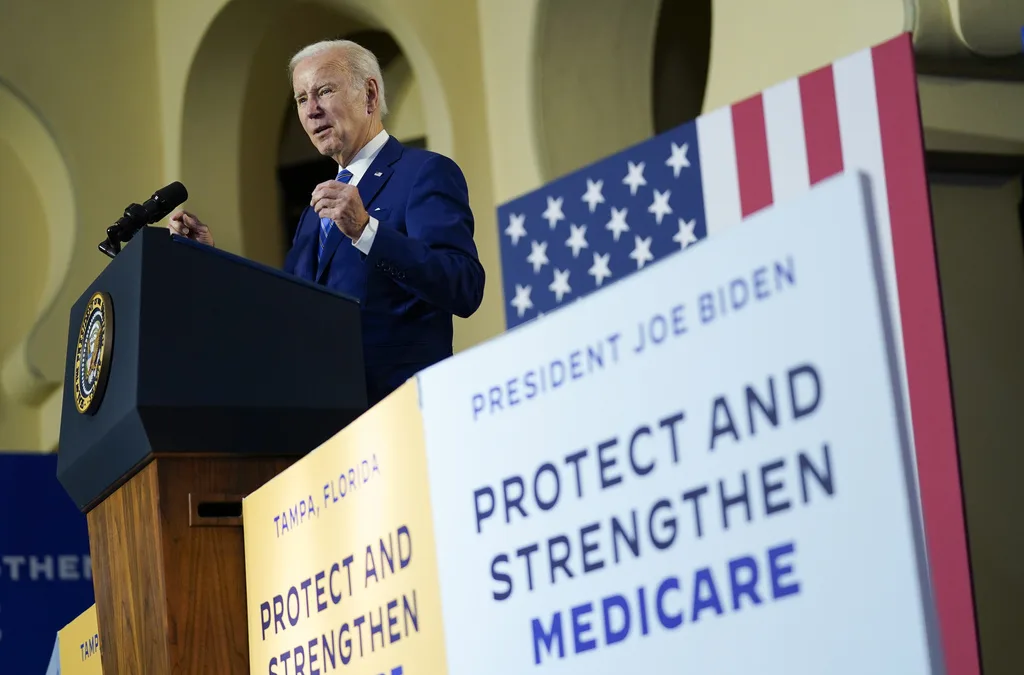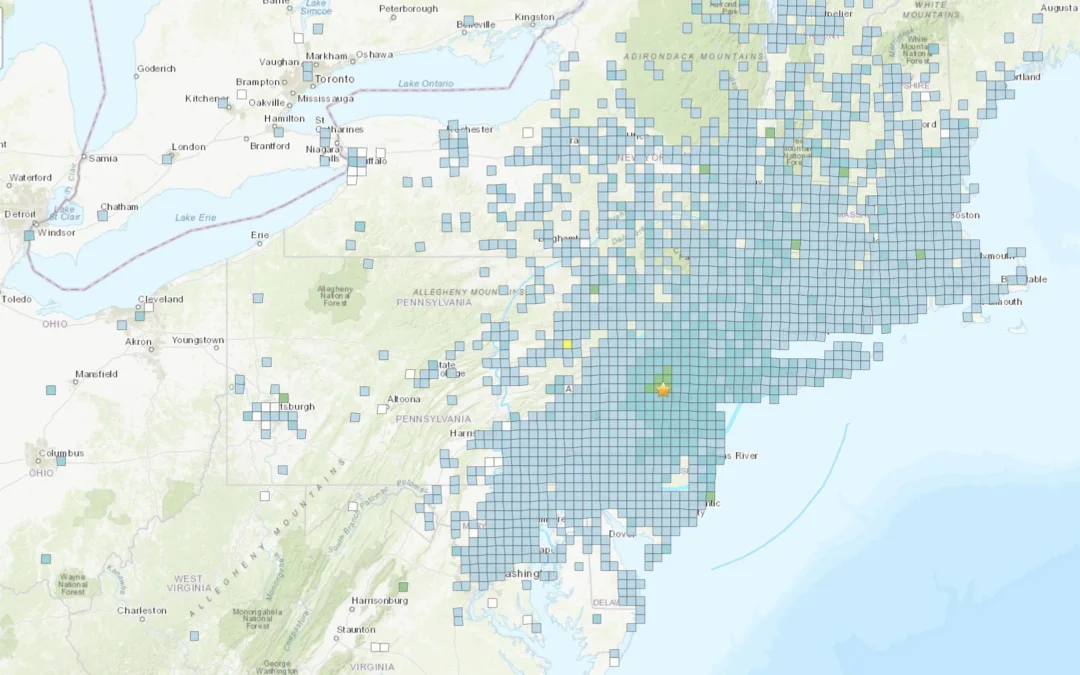
WASHINGTON, DC - DECEMBER 20: Dusk falls over the US Capitol building on December 20, 2020 in Washington, DC. Republicans and Democrats in the Senate finally came to an agreement on the coronavirus relief bill and a vote is expected later today or tomorrow. (Photo by Samuel Corum/Getty Images)
Including how unemployment benefits, student loans, and the eviction moratorium are changing, and for how long.
Update (Dec. 22, 2020; 9 a.m.): Congress passed the relief package late Monday night. The Senate cleared the massive package by a 92-6 vote after the House approved it by 359-53.
After months of deadlock, lawmakers are close to approving another round of coronavirus relief aid.
The stimulus package will provide a total of $900 billion in aid to Americans, businesses, schools, and healthcare providers. It also funds vaccine distribution as the country continues to struggle through the coronavirus pandemic. This will be the first significant allocation of funds from the federal government since last April.
The stop-and-go negotiations over the past eight months have come largely as a result of Republicans like Senate Majority Leader Mitch McConnell (R-Ky.) demanding that businesses can’t get sued if employees or customers are harmed by their actions during the pandemic. That gridlock frustrated many Americans and small businesses.
Lawmakers were forced into reaching an agreement in part by the looming threat of a government shutdown. The bill will be merged with a sweeping spending measure that will keep the federal government funded through the end of the fiscal year. The deal also heads off a steep financial cliff that nearly 14 million Americans were facing, as previous aid programs were set to run out the day after Christmas.
Here’s a look at what’s included in the newest coronavirus relief bill:
Individual Payments to Americans
Adults making up to $75,000 per year will receive $600 from the federal government. Couples making up to $150,000 a year would get $1,200 and families with dependent children will also get $600 per child.
The funding could arrive via direct deposit for people who filed their taxes online, about two weeks after legislation is officially passed. It could take longer for people who mailed in their taxes payments.
People with incomes above these levels could receive a partial payment. The details of this funding will become available when the full text of the stimulus package is released.
Enhanced Unemployment Benefits
The new stimulus package will extend the amount of time people can collect unemployment benefits through March 14. It will provide an additional $300 per week on top of state unemployment benefits which is half what the first round of coronavirus relief bills provided, at an additional $600 per week. That funding expired at the end of July.
These benefits also cover people who are self employed, gig workers, and part-time workers. The funding will become available to Americans after their state reaches an agreement with the Department of Labor.
Student Loans
Typically the federal government starts charging interest on payments for students who finish school or who take too long to finish their degrees. This new bill builds off previous legislation that says interest payments will not be charged for 60 days as long as a student is still in school.
Additionally, as part of previous relief aid the federal government paused the collection of student loans through Jan. 31. The language in the new bill is not final but that pause could be extended further.
Eviction Moratoriums and Housing Help
The new legislation will extend a federal moratorium on evicting renters through Jan. 31. The legislation extends the existing order from the Trump administration and the Centers for Disease Control and Prevention, which was put into effect earlier this year. People who make more than $99,000 a year or married couples who together make more than $198,000 would not be eligible for this moratorium.
Americans with mortgages who are struggling to make payments could qualify to temporarily pause or reduce existing payments for 180 days. Homeowners can ask for another 180 days if needed, but the precises rules will vary depending on the mortgage.
Small Business Loans
The new stimulus package will reopen the Paycheck Protection Program (PPP) for small businesses. In total it allocates $284 billion for the PPP. It also includes $15 billion for independent movie theaters, live venues, nonprofits, local newspapers, and cultural institutions, among others.
It also allocated $12 billion for minority-owned and very small businesses.
Grade Schools and Child Care
Elementary schools through colleges would get $82 billion in COVID-19 relief funding, to equip teachers with personal protective equipment and other materials to help schools offer in-person instruction safely. The childcare industry which was hit hard by the pandemic would also receive $10 billion in funding.
Vaccine Funding
The stimulus package includes another $20 billion to buy more doses of coronavirus vaccines, $20 billion for testing, and another $8 billion to help with vaccine distribution.
Food Security
Supplemental Nutrition Assistance Program (SNAP) benefits recipients will see an increase of 15% for the next six months. The new stimulus package would not expand eligibility for the program, however.
And $400 million in funds will be sent to food banks and pantries through the Emergency Food Assistance Program. For older individuals, the stimulus provides $175 million for programs that serve seniors like Meals on Wheels.
What’s Not in the Package
Direct aid to state and local governments has been left out of the funding package. Local governments have been plagued with falling tax revenues with businesses closed or operating at much lower volume, and little help from the federal government.
Another sticking point in negotiations was over companies’ liability for employees or customers harmed by their actions during the pandemic. Republicans ultimately proposed dropping this from the stimulus package in exchange for Democrats leaving state and local aid behind.
Lawmakers in the House and Senate are expected to vote to approve the stimulus package on Monday. The bill will then head to the president for his signature for official approval.
Politics

Infrastructure funding to help repair two historic Philadelphia bridges
Philadelphia is set to receive $14.2 million from President Joe Biden’s infrastructure law to repair two historic bridges crossing the Wissahickon...

Biden cancels student loan debt for 10,800 more Pennsylvanians
The Biden administration on Friday announced its cancellation of an additional $7.4 billion in student debt for 277,000 borrowers, including 10,800...

The Republican war on Medicare raises the stakes in 2024
Nearly 3 million Pennsylvanians rely on Medicare benefits—benefits they spent decades paying into, with the promise that the program would be there...
Local News

4.8 magnitude earthquake centered in New Jersey felt across Pennsylvania Friday morning
According to the U.S. Geological Survey, the quake’s impact in Pennsylvania was primarily felt in the eastern part of the state, though the...

‘SCTV’ star Joe Flaherty, a Pittsburgh native, has died at 82
Flaherty established himself while working with Eugene Levy, Martin Short, and Catherine O’Hara on the classic Canadian sketch comedy show, and...





